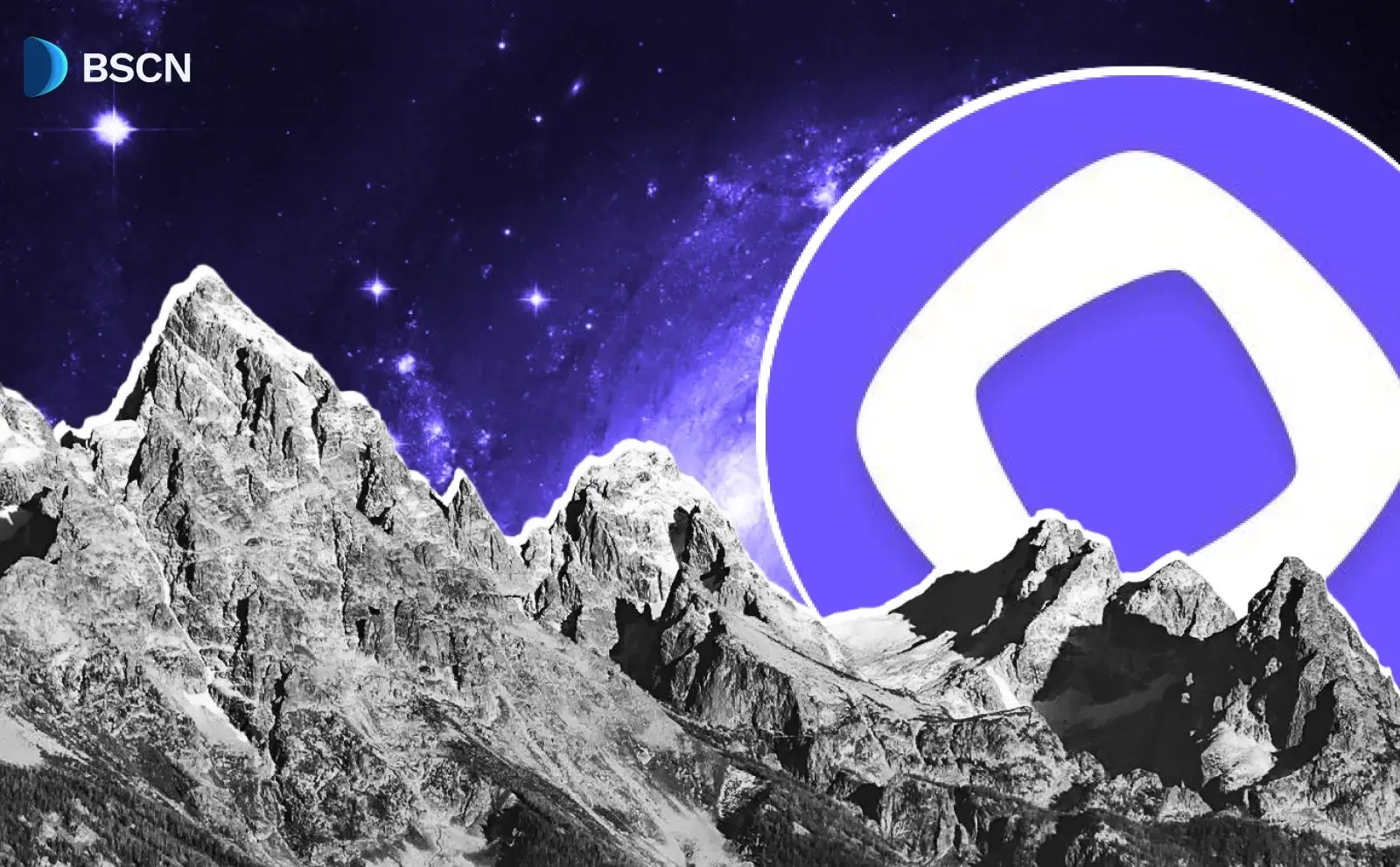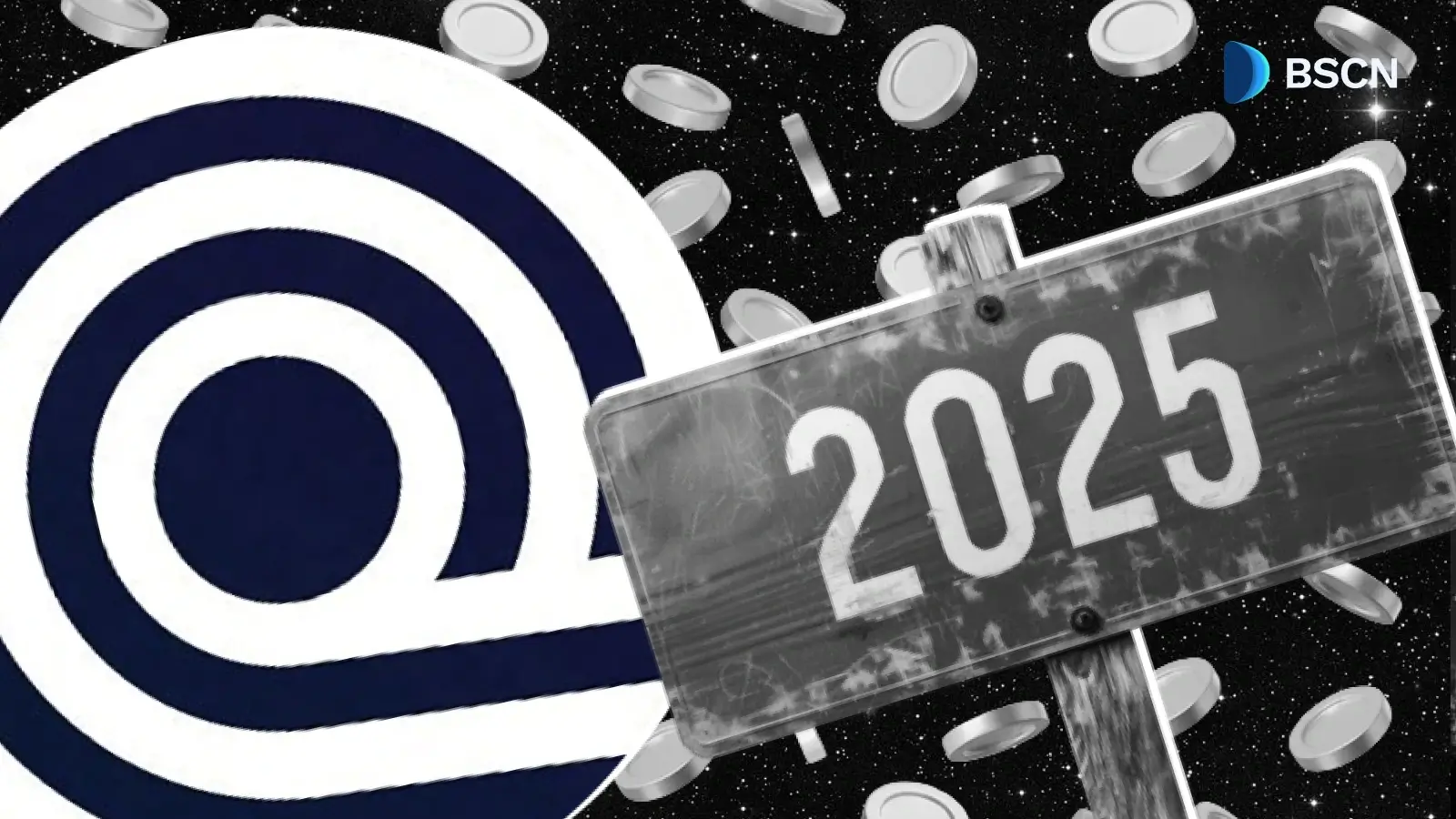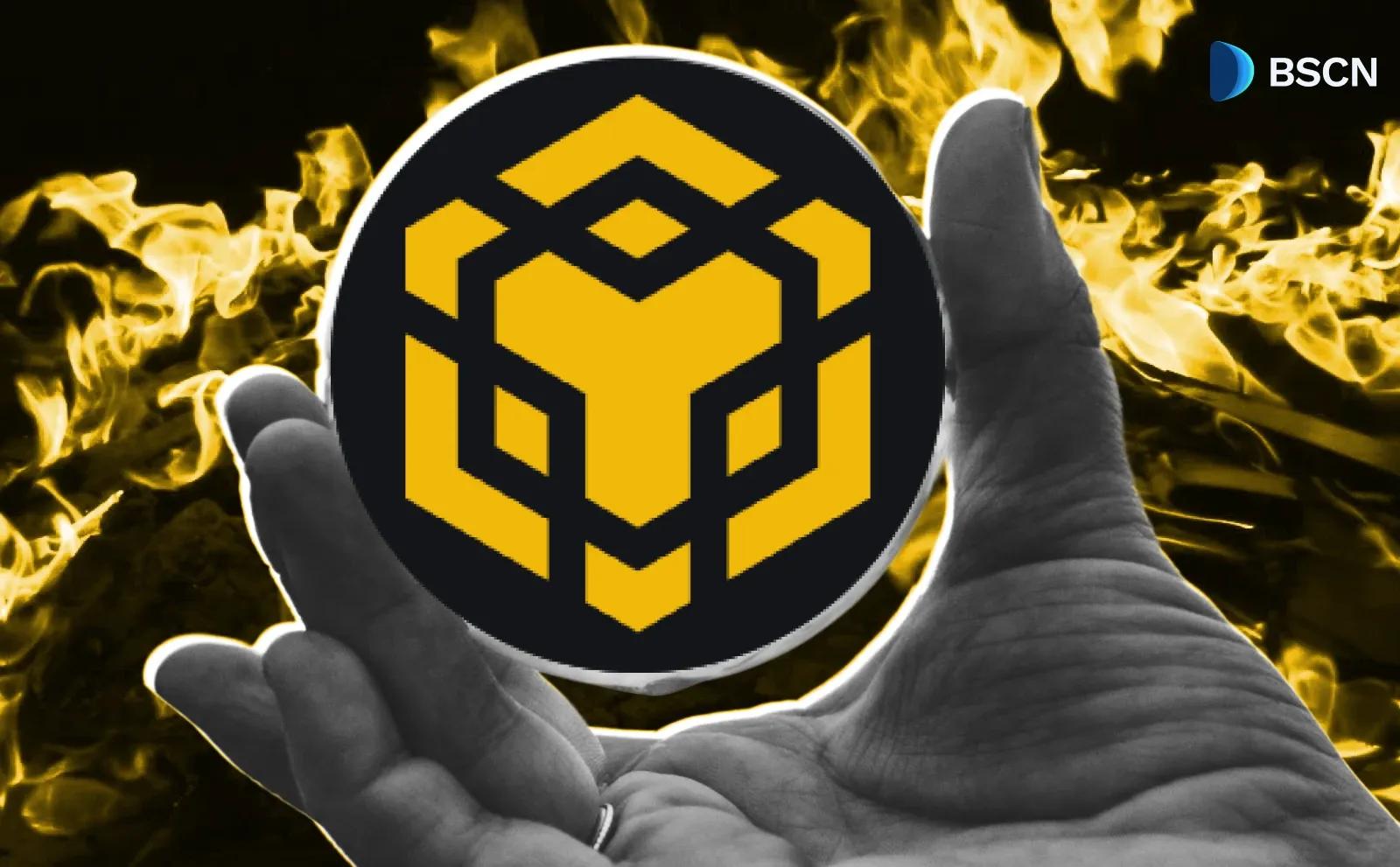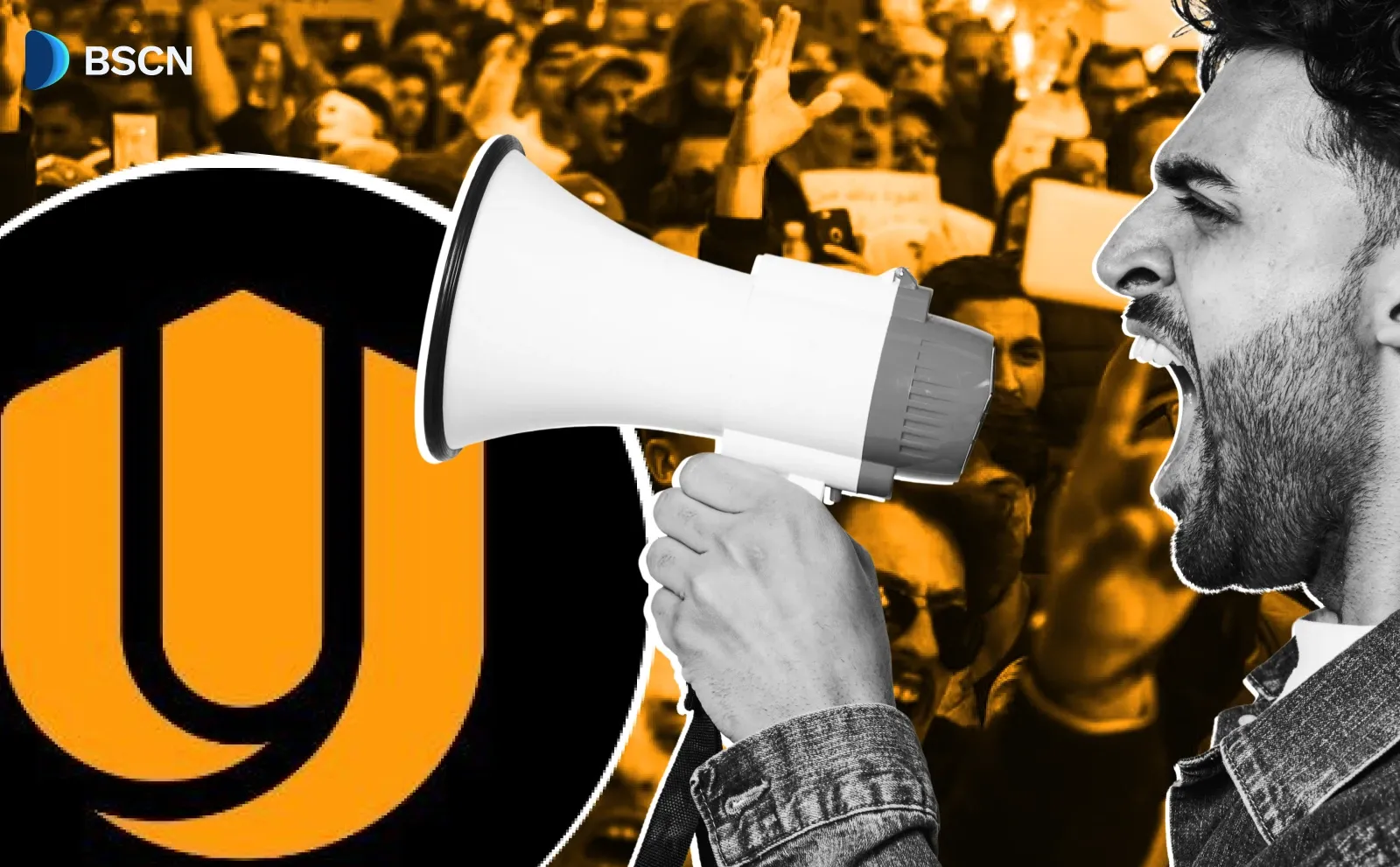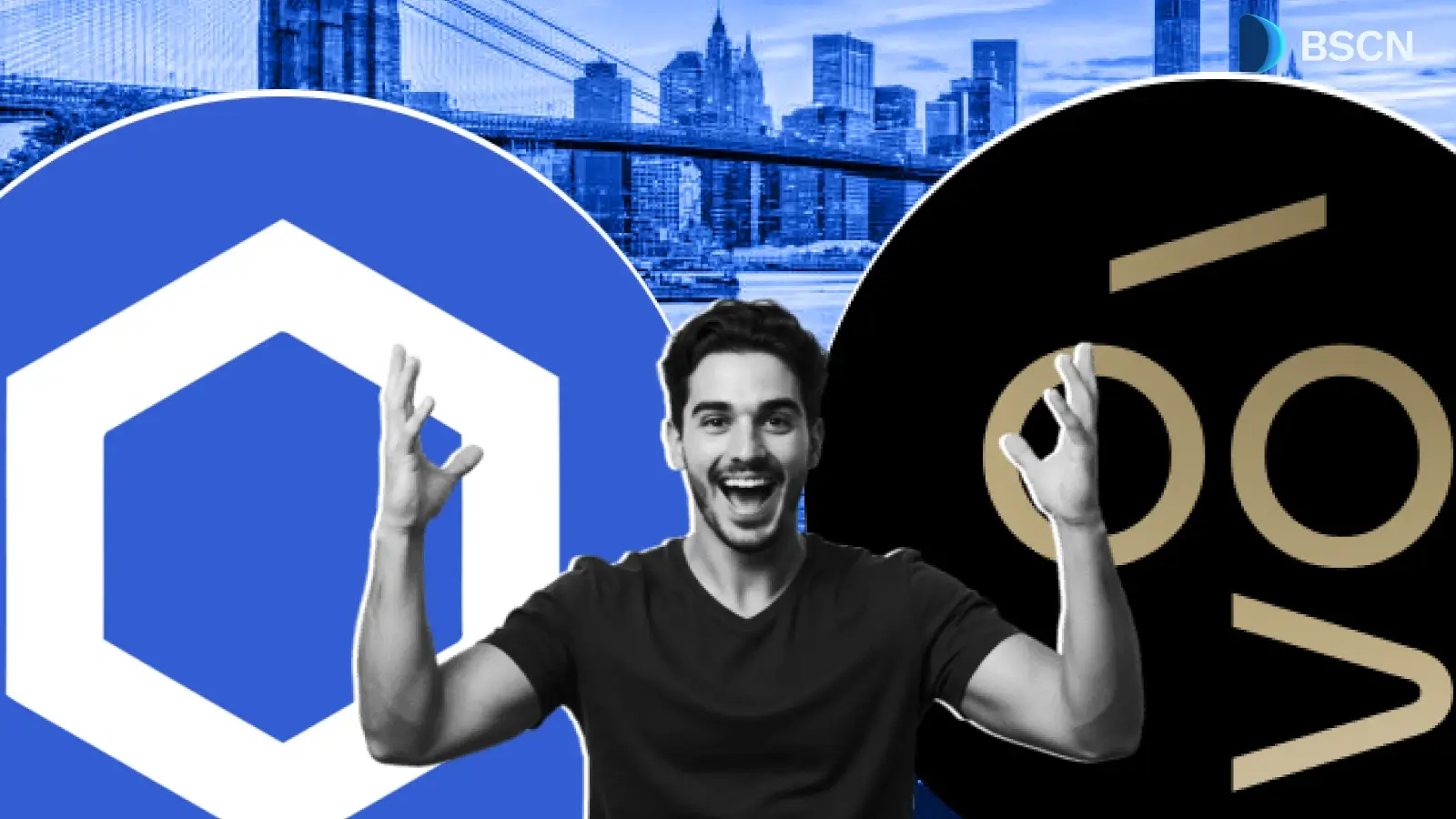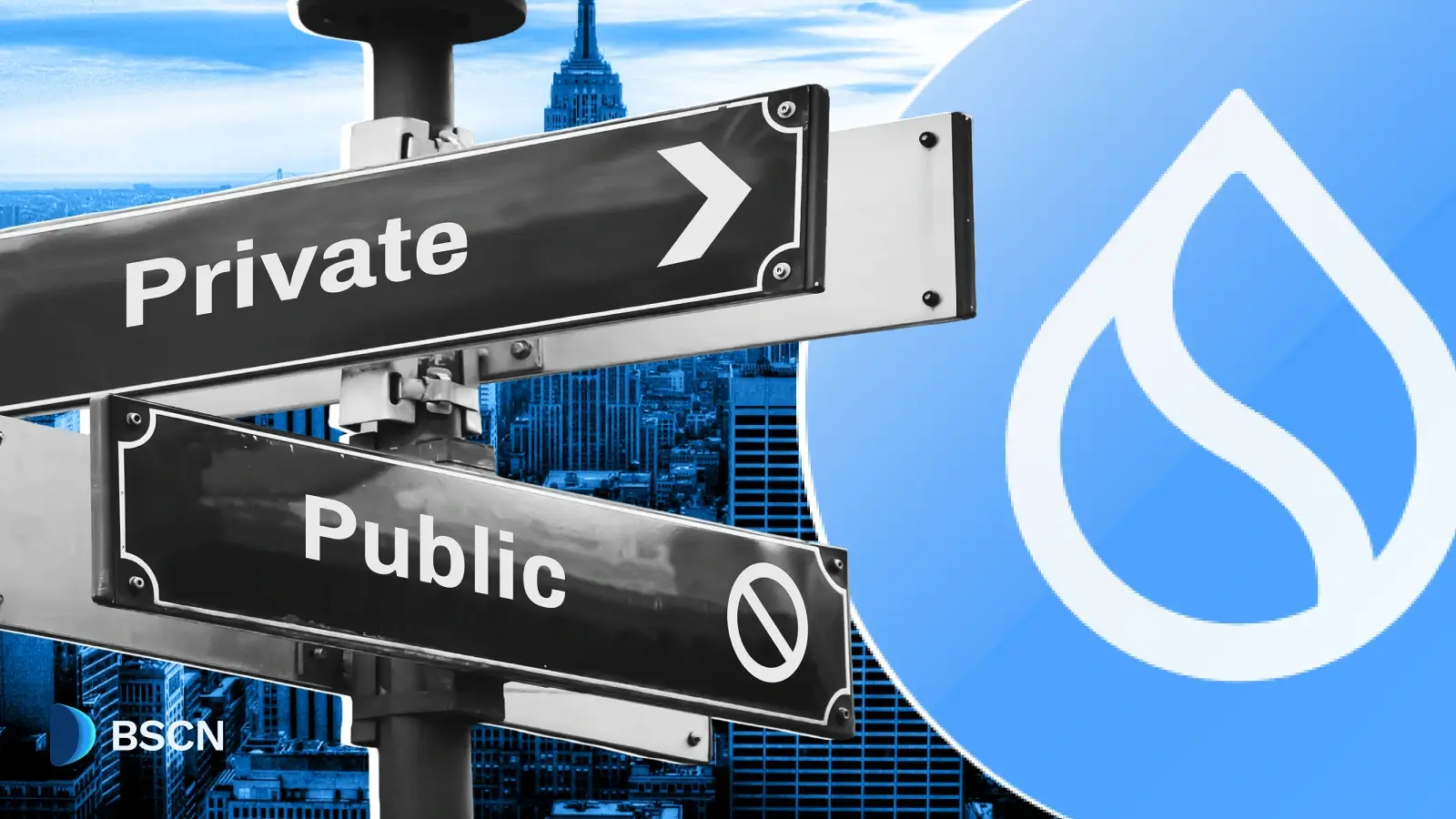Deepdive
(Advertisement)
Exploring BOB: The Gateway to Bitcoin DeFi
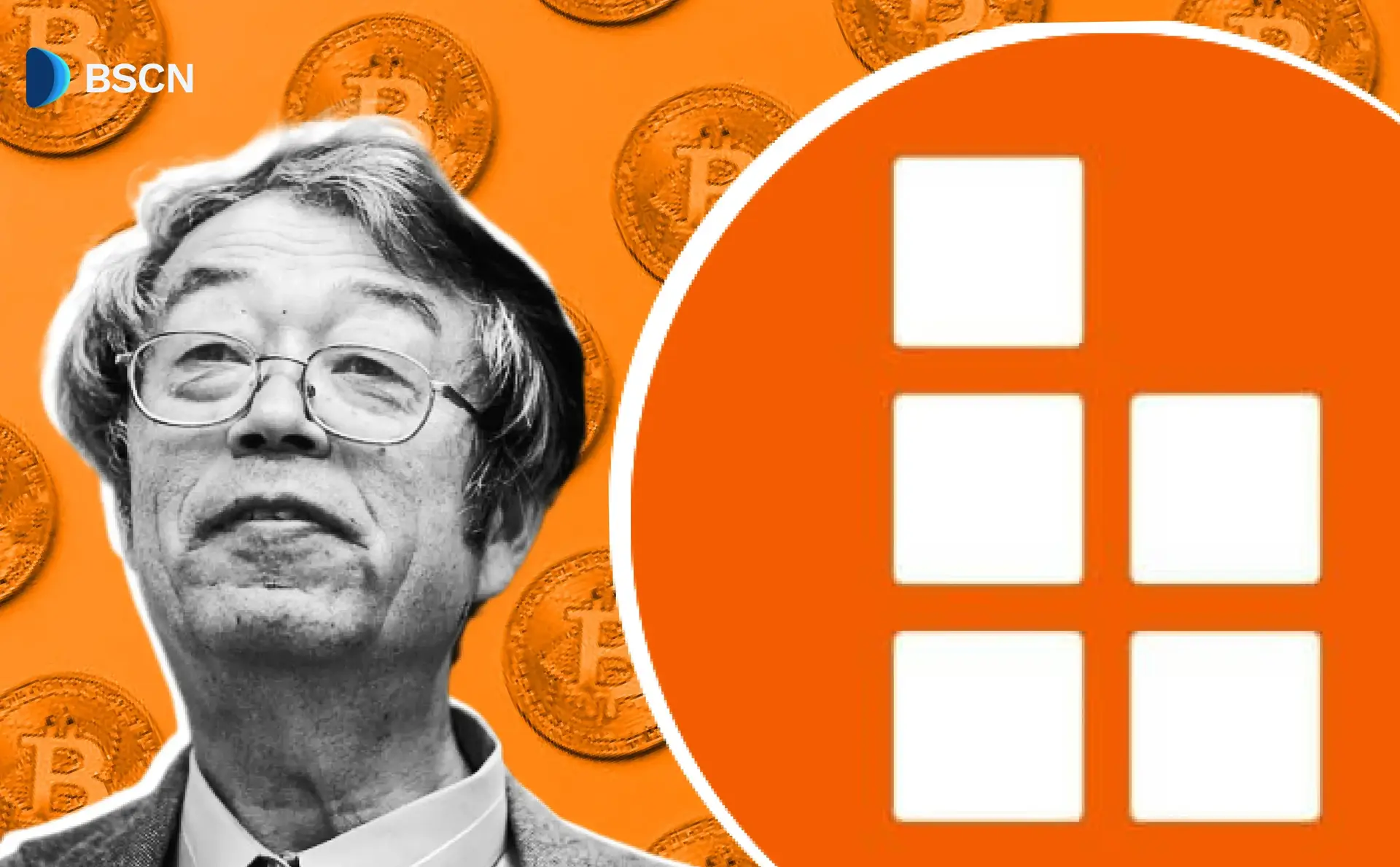
BOB bridges Bitcoin's security with Ethereum's DeFi as a hybrid Layer-2, enabling trustless native BTC deposits for staking, lending, and yields.
UC Hope
August 11, 2025
(Advertisement)
Table of Contents
BOB, or Build on Bitcoin, addresses key gaps in the blockchain ecosystem by enabling Bitcoin holders to participate in Decentralized Finance (DeFi) without relying on asset wrapping or centralized custodians.
Bitcoin controls a significant portion of the cryptocurrency value but lacks built-in support for smart contracts and yield-generating activities, leaving much of its liquidity untapped. Meanwhile, networks like Ethereum offer extensive DeFi tools but miss Bitcoin's security and user base. BOB fills this need as a hybrid Layer-2 network that combines Bitcoin's proof-of-work security with Ethereum's virtual machine, allowing for trustless deposits of native Bitcoin via BitVM and the use of zero-knowledge proofs.
This setup supports direct DeFi engagement, such as lending and staking, while unlocking Bitcoin's liquidity for broader applications across chains. By bridging these ecosystems, BOB reduces the risks associated with cross-chain transfers and provides a programmable layer for Bitcoin, meeting the demand for secure and efficient DeFi on the network with the largest market capitalization.
What Is BOB?
BOB serves as a Layer-2 network built to extend Bitcoin's capabilities into DeFi. It combines Bitcoin's proof-of-work security with Ethereum's virtual machine, enabling smart contract execution while preserving Bitcoin's core attributes, such as scarcity and decentralization. The network avoids asset wrapping or centralized custodians, allowing Bitcoin holders to participate in DeFi protocols, including lending and yield farming.
Launched to address limitations in Bitcoin's programmability, BOB integrates Ethereum's innovation to unlock liquidity estimated in trillions of dollars from Bitcoin's market. Its architecture ensures that transactions and assets inherit Bitcoin's immutability, making it a platform where Bitcoin can function in a DeFi context without compromising its foundational principles.
The network's design focuses on minimizing trust, utilizing technologies like BitVM to verify Bitcoin transactions on the Layer-2 chain. This means users can deposit native Bitcoin directly into the system, where it becomes available for DeFi applications. BOB also supports a range of assets, including wrapped Bitcoin variants and stablecoins, to facilitate broader interoperability. By positioning Bitcoin at the center of DeFi, the network aims to provide a secure environment for users to manage and grow their holdings.
The Ultimate Bitcoin Playground
BOB functions as a development environment at the crossroads of Bitcoin and the Ethereum Virtual Machine, or EVM. It offers complete compatibility with EVM opcodes, allowing developers to create applications secured by Bitcoin using Solidity code and tools such as Remix and Hardhat. This compatibility streamlines the process for building decentralized applications, or dApps, that leverage Bitcoin's security while accessing Ethereum's ecosystem.
Developers on BOB have access to analytics, wallets, and infrastructure that support quick transitions from concept to deployment on the mainnet. The platform's software development kit (SDK) provides tools for interacting with Bitcoin wallets, data sources, Ordinals, and zero-knowledge virtual machine technology. This kit streamlines the development of applications for managing assets, including BRC-20 tokens and Runes.
As part of the OP Superchain and built on the OP Stack, BOB connects Bitcoin's user base with Ethereum's liquidity in stablecoins and established assets. It supports various sectors, including rollups, artificial intelligence, decentralized autonomous organizations (DAOs), DeFi, Non-Fungible Tokens (NFTs), and entertainment applications. The hybrid approach eliminates common obstacles, allowing developers to build on Bitcoin's network without requiring specialized knowledge beyond standard EVM practices. This setup has attracted over 553,000 unique users, demonstrating its appeal as a platform for Bitcoin-focused development.
What Comprises the BOB Ecosystem?
The BOB ecosystem comprises more than 120 projects, spanning DeFi protocols to infrastructure providers, and fostering connections between the Bitcoin and Ethereum communities:
Key DeFi Integrations
Key DeFi integrations feature Uniswap for asset swaps, Aave and Euler for lending services, and Chainlink for price oracles. These protocols enable standard DeFi functions, such as trading, borrowing, and data feeds, to be integrated within BOB's hybrid structure.
Bitcoin-Specific Elements
Bitcoin-specific elements include Babylon for staking and finality, Lombard for liquidity staking tokens with $1.66 billion in total value locked, Bedrock for bridging uniBTC, and PumpBTC for additional staking options. Babylon handles the staking process to provide transaction finality, while Lombard offers LBTC as a yield-bearing token backed 1:1 by Bitcoin. Bedrock facilitates cross-chain bridging for uniBTC, allowing Bitcoin to move into other ecosystems, and PumpBTC provides further staking mechanisms to enhance yield generation.
Institutional Partners
Institutional partners, including Fireblocks, Cobo, ForDeFi, Nexo, Re7 Capital, MEV Capital, LayerZero, and Everstake, contribute to the network's infrastructure and cross-chain capabilities. These entities provide custody services, capital management, and interoperability tools, ensuring robust support for large-scale operations and secure asset handling across chains.
Supported Assets
Supported assets include native Bitcoin via BitVM, as well as wrapped forms such as wBTC, tBTC, and fBTC, and stablecoins like USDC, USDT, and DAI. The ecosystem also supports Bitcoin-native assets, including Runes, Ordinals, and BRC-20 tokens. This broad asset support enables users to manage a variety of Bitcoin-derived and Ethereum-compatible tokens within a single platform, facilitating diverse DeFi strategies without the need for multiple wallets or bridges.
Benefits for Projects
For projects originating on EVM chains, BOB provides access to Bitcoin's user base and liquidity staking tokens. Conversely, Bitcoin applications benefit from Ethereum's DeFi tools, user engagement, and on-ramps for fiat conversions.
This mutual access enables EVM projects to tap into Bitcoin's large holder community, thereby increasing the adoption of these projects. At the same time, Bitcoin apps benefit from the programmability and liquidity provided by Ethereum's established DeFi landscape, including tools for lending, trading, and yield optimization.
Development Support
Development support includes grants, incubators with formats similar to pitch competitions, SDKs, and wallet integrations. Grants fund innovative projects, while incubators offer structured programs that enable startups to pitch their ideas and receive mentorship. SDKs provide developers with tools to easily build and integrate applications, while wallet integrations ensure a smooth user experience for asset management and transactions.
BOB Fusion
BOB Fusion serves as the official points program for BOB. Launched to encourage on-chain activity on the BOB mainnet, the program allows users to earn points called BOB Spice through interactions with decentralized applications (dApps) and other network features.
This initiative aims to boost user participation, liquidity, and adoption in Bitcoin DeFi by rewarding actions like staking, swapping, and bridging assets.
Recent Additions
Recent additions, such as Solv's BTC+ vault and Bedrock's uniBTC bridging, expand yield opportunities across chains, while BOB Stake offers simplified access to staking products. Solv's BTC+ vault enables users to earn yields on Bitcoin holdings through tokenized strategies, while Bedrock's uniBTC bridging facilitates seamless transfers of Bitcoin liquidity.
BOB Stake streamlines the staking process with a user-friendly interface, making it easier to participate in yield-generating activities without complex setups.
What Is the Status of BOB's Mainnet and TVL?
BOB's mainnet went live on May 1, 2024, marking the first phase of its deployment, which operates as an optimistic rollup on Ethereum using the OP Stack. At launch, it featured over 40 dApps and an initial TVL of $300 million. As of August 2025, the overall TVL stands at about $227 million, with DeFi-specific TVL at $132.2 million. This positions BOB as the sixth-largest Bitcoin Layer-2 or sidechain by TVL metrics.
The mainnet supports EVM-based smart contracts, bridging for Bitcoin-related assets, and a tBTC-v2 Light Relay for verifying Bitcoin proofs on the Layer 2. Full Bitcoin finality, involving staked Bitcoin and integration with Babylon's Bitcoin Secured Network, is scheduled for the second phase in the fourth quarter of 2025. This upgrade will enhance security without affecting existing operations.
Adoption has grown steadily, with programs like BOB Fusion contributing to inflows, such as $64 million in on-chain TVL achieved in under 12 hours during its second season. The network now serves over 552,000 unique users, reflecting its expanding role in the Bitcoin DeFi space.
The Hybrid Chain Development
BOB's hybrid chain architecture merges Bitcoin's proof-of-work with Ethereum's DeFi framework, creating a network secured by Bitcoin while functioning as an Ethereum rollup. It participates in the OP Superchain via the OP Stack and serves as a Bitcoin-secured network through Babylon integration, using staked Bitcoin for finality. BitVM enables trust-minimized bridges for Bitcoin deposits, and hybrid zero-knowledge proofs improve efficiency for optimistic rollups.
The deployment occurs in phases:
Phase 1: Completed - Establishment as an Ethereum Rollup
The first phase of BOB's hybrid chain deployment has been completed. It focused on bootstrapping the network as an optimistic Ethereum rollup using the OP Stack. This setup enabled initial liquidity inflows and user onboarding by providing a familiar EVM-compatible environment.
By operating as part of the OP Superchain, Phase 1 laid the groundwork for integrating Ethereum's DeFi framework, enabling developers and users to deploy smart contracts and access tools like Solidity, while preparing for deeper integration with Bitcoin. This phase ensured the chain could handle basic transactions and asset bridging, such as for wrapped Bitcoin variants, without relying on Bitcoin-specific security mechanisms yet. The completion of Phase 1 occurred with the mainnet launch on May 1, 2024, which included over 40 dApps and $300 million in initial TVL, setting the stage for subsequent enhancements in security and interoperability.
Phase 2: In Progress - Incorporation of Bitcoin Anchoring
The second phase is currently underway, building on the Ethereum rollup foundation by incorporating Bitcoin anchoring features. This involves integrating staking mechanisms and BitVM bridges for trustless Bitcoin deposits, enabling native BTC to be used directly on the chain without the need for wrappers or custodians.
Additionally, it introduces merged mining under the name OptiMine, which provides resistance to chain reorganizations by leveraging existing Bitcoin mining power without incurring extra energy costs. Through partnerships like Babylon for BTC staking and finality, this phase enhances the network's security by billions in staked Bitcoin, making BOB a Bitcoin Secured Network (BSN).
The rollout includes hybrid zero-knowledge proofs to optimize efficiency for optimistic rollups, ensuring smoother cross-chain interactions. Progress in this phase has included the launch of a hybrid Layer-2 testnet in July 2025, with full mainnet integration scheduled for the fourth quarter of the same year, aiming to reduce trust assumptions and enhance censorship resistance.
Phase 3: Planned - Shift to Optimistic Bitcoin Rollup
The third phase is planned for future implementation, transitioning BOB to an optimistic Bitcoin rollup secured by BitVM2. In this stage, network nodes will stake Bitcoin directly on the Bitcoin blockchain to verify and validate BOB blocks, inheriting Bitcoin's proof-of-work security more deeply. This shift will merge Bitcoin's immutability with the rollup's scalability, enabling fraud proofs and finality checks powered by staked BTC.
The architecture will continue to utilize the OP Stack for EVM compatibility while prioritizing Bitcoin as the primary settlement layer, thereby reducing dependency on Ethereum for core security. This phase aims to enhance trust minimization for deposits and withdrawals, supporting features such as unilateral exits to Bitcoin.
No specific timeline is detailed beyond following Phase 2, but it aligns with ongoing developments in BitVM technology to ensure the network remains resistant to attacks while scaling for multi-chain DeFi activities.
Phase 4: Anticipated - Evolution to Zero-Knowledge Rollups
The fourth phase is anticipated in the longer term, evolving BOB into a zero-knowledge (ZK) rollup system once Bitcoin opcode upgrades are available. This will involve implementing ZK proofs for all transactions, providing cryptographic verification of state transitions without revealing the underlying data, which enhances both privacy and efficiency. Building on prior phases, it will maintain the hybrid model by combining ZK technology with Bitcoin's security and Ethereum's programmability, potentially using tools like hybrid ZK proofs for cost reduction. The phase depends on advancements in Bitcoin's protocol, such as potential soft forks for new opcodes, to enable native ZK verification on Bitcoin.
This final stage will ensure full scalability for cross-chain operations, with all assets and apps inheriting Bitcoin's decentralization, while offering censorship resistance and low-latency finality for DeFi applications. No firm timeline has been set, as it depends on external developments within the Bitcoin ecosystem.
What Are BOB's Key Features?
BOB includes several features that integrate Bitcoin's attributes with DeFi functionality:
Bitcoin Security
Bitcoin security on BOB is derived from approximately $4.9 billion in staked Bitcoin via Babylon, where nodes verify blocks to provide finality and fraud proofs through BitVM, thereby guarding against reorganizations. This mechanism leverages Babylon's staking protocol, which secures the network by allowing Bitcoin holders to stake their assets to support finality providers, currently 62 of which are active out of a total of 123.
By integrating with BitVM, BOB ensures trust-minimized verification of transactions, preventing chain re-orgs and enhancing overall decentralization without additional energy expenditure from miners.
Multi-chain Bitcoin Yield
Multi-chain Bitcoin yield enables users to earn returns on Bitcoin across various networks, including Ethereum, Solana, BNB, and Base, utilizing intents, vaults, and secure bridges. This supports composable yield from tokenized Bitcoin without requiring an exit from the ecosystem. Users can deploy Bitcoin into yield-generating strategies that stack rewards from multiple chains, such as combining staking on Babylon with lending on Aave or swaps on Uniswap, all facilitated through BOB's hybrid architecture.
The feature relies on cross-chain protocols, such as LayerZero, for seamless transfers, enabling Bitcoin holders to access DeFi opportunities across multiple blockchains while maintaining control over their assets.
Native Bitcoin DeFi
Native Bitcoin DeFi enables the direct use of Bitcoin in protocols through BitVM and zero-knowledge proofs, eliminating the need for custodians for activities like lending and staking while preserving Bitcoin's scarcity. This approach allows users to deposit native BTC trustlessly into DeFi applications on BOB, where it can be utilized in smart contracts without requiring wrapping or third-party intermediaries.
By verifying Bitcoin transactions on Layer 2 via BitVM, the system enables secure, on-chain operations, such as yield farming and borrowing, ensuring that Bitcoin's core properties, including its fixed supply and portability, remain intact throughout the process.
Building on Bitcoin
Building on Bitcoin is facilitated by OP Stack's EVM layer, offering access to liquidity, infrastructure, and tools. The Gateway SDK facilitates integration with Bitcoin elements, provides open-source documentation, offers modular bridges, and offers treasury funding support for developers.
Developers can utilize familiar Ethereum tools, such as Solidity and Hardhat, to create dApps secured by Bitcoin, with the SDK providing interfaces for Bitcoin wallets, Ordinals, and zkVM technology. The ecosystem's treasury allocates funds for grants and public goods, while modular bridges enable easy connections to other chains, simplifying the deployment of applications that leverage Bitcoin's security alongside Ethereum's programmability.
Who Backs BOB?
BOB has secured $21 million in funding, matching Bitcoin's supply cap. This includes a $10 million seed round in March 2024, led by Castle Island Ventures, and subsequent strategic rounds of $9.5 million from December 2024 to July 2025, also led by Castle Island. Returning investors include Ledger Cathay Capital, RockawayX, Asymmetric, Hypersphere, IOSG Ventures, Bankless Ventures, Zee Prime Capital, CMS Holdings, and Daedalus Angels. New participants are Sats Ventures, Amber Group, and Nathan McCauley of Anchorage Digital.
Earlier backers encompass Coinbase Ventures, Mechanism Capital, Alliance, Antalpha Ventures, Bitcoin Frontier Fund, UTXO Management, Web3.com Ventures, Via BTC Capital, Silvermine, Modular Capital, DFG, and Blockchain.com. The capital supports hybrid chain advancements, BitVM implementations, and ecosystem expansion.
In summary, BOB offers a hybrid Layer-2 network that secures DeFi using Bitcoin's infrastructure, supports EVM development, and enables native Bitcoin usage in yield-generating activities across chains. Its phased rollout, ecosystem integrations, and funding position it to serve 553,000 users as of August 2025.
Sources:
- BOB Official Documentation - https://docs.gobob.xyz/
- Castle Island Ventures Announcement - https://www.castleisland.vc/post/announcing-our-investment-in-bob
- DeFiLlama BOB Metrics - https://defillama.com/chain/BOB
- BOB $21M Funding Raise - https://blog.gobob.xyz/posts/bob-has-raised-21m
Conclusion
BOB functions as a hybrid Layer-2 network that combines Bitcoin's security features with Ethereum's DeFi protocols. It enables trustless deposits of native Bitcoin for use in activities such as staking, lending, and yield farming, supported by BitVM for transaction verification and zero-knowledge proofs for efficiency. The platform offers EVM compatibility, enabling developers to deploy smart contracts using Solidity and standard development tools.
In the long run, BOB's progress involves completing its phased rollout, with Phase 3 transitioning to an optimistic Bitcoin rollup secured by BitVM2 for deeper integration of Bitcoin's proof-of-work, and Phase 4 evolving into zero-knowledge rollups after Bitcoin opcode upgrades enhance privacy, scalability, and low-latency finality for cross-chain DeFi operations. Recent funding supports the acceleration of these developments, including BTC-staked finality by the end of 2025, positioning the protocol for sustained growth in Bitcoin DeFi adoption and ecosystem expansion.
Read Next...
Frequently Asked Questions
What is BOB in Bitcoin DeFi?
BOB is a hybrid Layer-2 network that links Bitcoin's security to Ethereum's DeFi tools, allowing direct Bitcoin deposits via BitVM for activities like staking and lending without wrappers.
How does BOB's hybrid chain function?
It operates as an Ethereum rollup with OP Stack, integrating Bitcoin finality through staked BTC and Babylon, utilizing phases to add features such as merged mining and zero-knowledge proofs.
What is BOB's TVL and user base?
As of August 2025, BOB has a total value locked of $227 million, including $132.2 million in DeFi, and over 553,000 unique users on its mainnet, launched in May 2024.
Disclaimer
Disclaimer: The views expressed in this article do not necessarily represent the views of BSCN. The information provided in this article is for educational and entertainment purposes only and should not be construed as investment advice, or advice of any kind. BSCN assumes no responsibility for any investment decisions made based on the information provided in this article. If you believe that the article should be amended, please reach out to the BSCN team by emailing [email protected].
Author
 UC Hope
UC HopeUC holds a bachelor’s degree in Physics and has been a crypto researcher since 2020. UC was a professional writer before entering the cryptocurrency industry, but was drawn to blockchain technology by its high potential. UC has written for the likes of Cryptopolitan, as well as BSCN. He has a wide area of expertise, covering centralized and decentralized finance, as well as altcoins.
(Advertisement)
Latest News
(Advertisement)
Crypto Project & Token Reviews
Project & Token Reviews
Comprehensive reviews of crypto's most interesting projects and assets
Learn about the hottest projects & tokens


